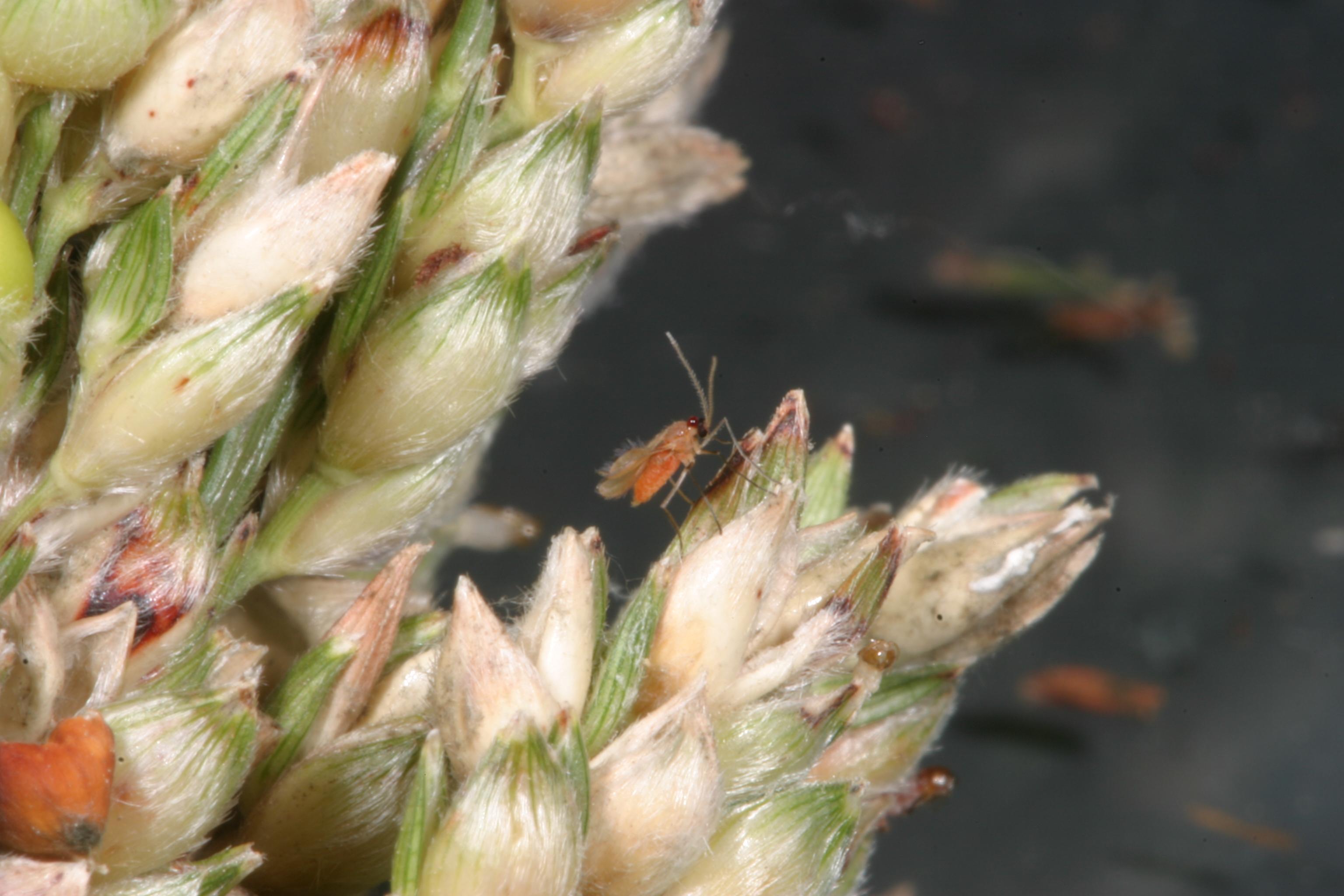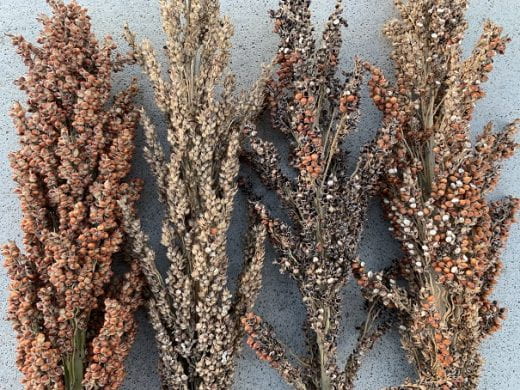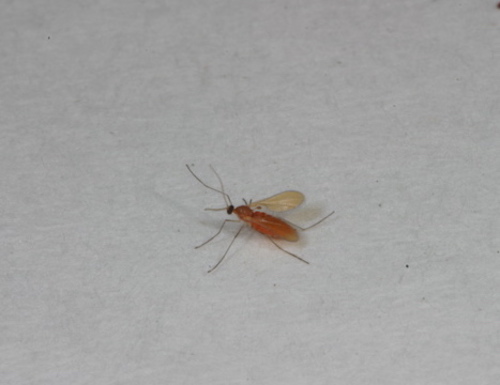Sorghum Midge
Contarinia sorghicola
This insect is problematic in southern states and has a history of sporadic infestations in southeastern Kansas, although more recently, economic infestations have occurred across central Kansas. In tropical and subtropical regions it is considered one of the most serious pests of grain sorghum. The risk will be higher in years with early, warm springs that favor earlier reproduction, more generations, and more potential for northward migration. Humid summers are favorable for adult survival. Given that Kansas represents the limit of the midges' northern range, later planted fields will be more at risk as they are more likely to still be in vulnerable flowering stages when midges arrive.
|
Figure 1. Adult midge. |
 Figure 2. Adult midge on sorghum flower. |
The adult is a tiny, reddish-colored fly only 1/8 inch long (existing Figs. 1 and 2). Eggs are laid in flowers at bloom. The pinkish larvae feed on ovaries of seeds and darken to reddish orange as they mature. Infested seeds may exude an orange juice when squeezed. When adults emerge, an empty, clear-colored pupal case may remain attached to the glumes. Typically, damage is only noticed after the fact, when heads appear 'blasted' and display large numbers of empty capsules. The damage is difficult to distinguish from that caused by lygus bugs, although the empty capsules are typically distributed up and down the head, whereas lygus bug damage tends to restricted to a band around the head corresponding to grain that was in milk stage at the time the adult bugs passed through the field. (Fig. 3) Panicles with blasted seed due to larval feeding.

Figure 3. Panicles with blasted seed due to larval feeding.
Accurate diagnosis frequently requires laboratory inspection. If you are in doubt, take a head sample to the local K-State Research and Extension office for submission to the entomology diagnostic lab. Avoid having sorghum in bloom during mid- to late August, especially south of US Highway 54. Chemical control is only effective if it can be timed to coincide with the initial adult flight, as their is no rescue treatment once eggs have been laid. Given the extensive scouting required to determine this, and the sporadic nature of the problem in Kansas, spray treatments are not advisable.
Page last updated on 10/16/2024 by J.P. Michaud.
